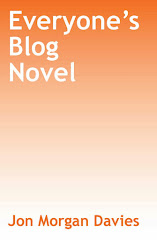The last book on my selected westerns list, this for many is the quintessential western, the all-time classic. Surprisingly, it obtained the status though it was written just in 1986 or so. Perhaps, the miniseries had much to do with its overarching popularity within the genre, though I can see why folks would place it as the all-time best. It is a doorstop of a book and traffics in a huge collection of tropes from the genre: heroes, gamblers, gunfights, Indians (as faceless bad guys), cavalry, cowhands, horse thieves, bandits, rangers, sheriffs—it's got nearly everything you'd find in the genre. Beyond that, it's a kind of swan song to the period. It's set at the tail end of frontier days, when most but not all of the free-range buffalo are gone, when the Native Americans themselves are virtually all defeated, when there is little land left to settle. That's essentially the story: men from Texas making a cattle drive to Montana, where few have yet settled and good grazing land is apparently plentiful.
But it takes more than eight hundred pages to get there. One reason is that McMurtry follows a great number of characters. Ostensibly, the central character is Augustus (Gus), a talkative former Texas Ranger who is quick with a gun and mostly lazy when it comes to all else. But the plot veers away from him at various points for chapters at a time, following among them: a prostitute who seems to have all the men in love with her; an old love interest of Gus's who now lives with an invalid husband in Nebraska; Gus's business partner and another former Ranger named Call; another old friend/Ranger who is a terrific lothario named Jake; a youngster named Newt who is of doubtful parentage; various cowhands—Dish, Pea Eye, Po Campo; a young sheriff and his deputy who are after Jake or perhaps after the sheriff's runaway wife; an excellent African American horseman named Deets; a bandit named Blue Duck; and on and on. In other words, it's more of an ensemble novel. And beyond that any one of these characters might die at any time, making the plot somewhat unpredictable. Sometimes a good guy dies, sometimes a bad one. Sometimes that death is “offscreen” (some other minor character we come upon mentions it) and other times, we get the actual scene. Individual episodes—robberies, run-ins, fights, bad weather—can make for exciting adventure fiction.
This is all to say that I understand the appeal. But I haven't fallen big for McMurtry. I enjoyed this work more than his Last Picture Show, which for me dragged and focused way too much of sexual exploits. In this work, too much is too much. It takes nearly a quarter of the book before the cowboys finally, definitively decide to start the cattle drive to Montana, a drive I knew was coming from page 1. Get on with, I felt throughout. Characters come and go. Since there are so many, I never felt that connected to them or emotionally invested, even when certain main characters died, ones I didn't expect. And while men are the center of the book and I would not expect otherwise, the women characters generally seem to be there largely for sex appeal. Indeed, the end of the novel itself seemed a bit strange insofar as its focus turned to a very minor event regarding a character who by that time has been out of the plot for awhile. It left me feeling as if, well, okay, the point? (I'm sure I'm missing something, the way I was underwhelmed by the end of Faulkner's As I Lay Dying's, though of course it somehow is supposed to suggest new life and vibrancy.)








